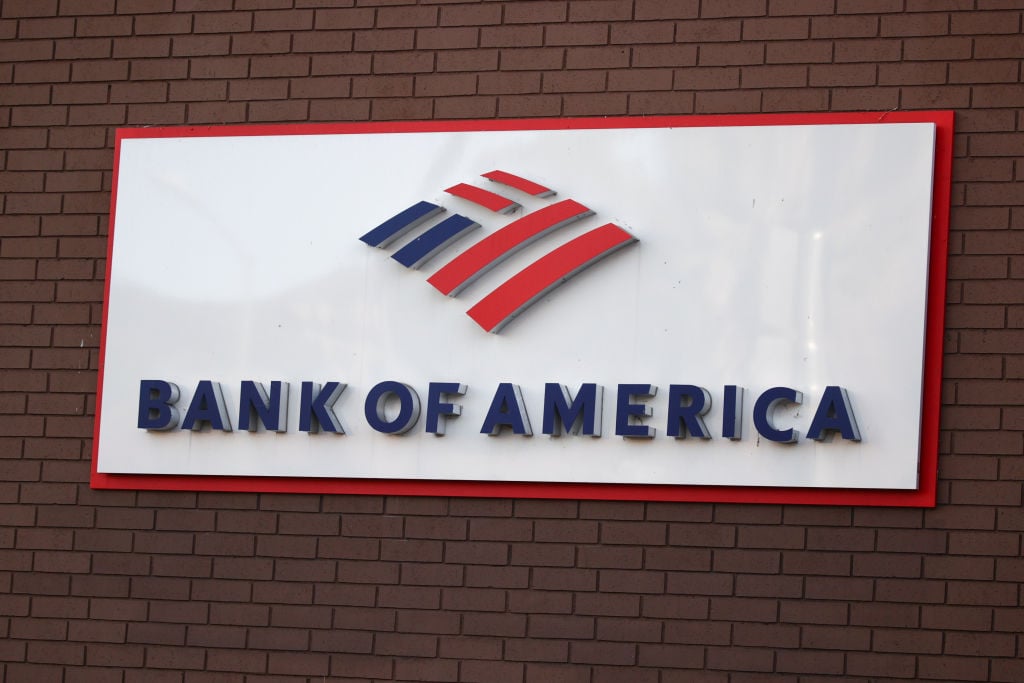What do you mean the next to crumble? Doesn't Bank of America's (NYSE:BAC) 90% plunge in the past year qualify as a "crumble"? Of course it does, but investors have very different opinions regarding whether that plunge has been justified.
Some say it's waaaay overdone, and B of A presents the opportunity of a lifetime to purchase a world-class company that will soon resume its dominance. They point to measures like an adequate Tier 1 capital ratio, the backstopping of some of Merrill Lynch's worst assets, synergies of Merrill's wealth advisory unit, and comments by CEO Ken Lewis that another trip to the TARP trough is off the table.
The other side says the second bailout needed to swallow Merrill's losses is a harbinger of things to come. They point to Lewis' years of reckless top-dollar acquisitions, indebtedness to taxpayers to the tune of $45 billion, estimates of billions of dollars more in future credit losses, and a tangible common equity ratio that leaves little, if any, room for error.
Sounds eerily familiar
The last part is the most important. When Citigroup (NYSE:C) recently converted $25 billion of government-preferred stock into common shares, CEO Vikram Pandit said, "This securities exchange has one goal -- to increase our tangible common equity."
Tangible common equity (TCE) is typically an obscure and scarcely mentioned statistic. Investors have long relied on Tier 1 capital ratios and earnings potential to judge a bank's investment merit.
What's changed in the past year is that imploding balance sheets have brought on the possibility of wiping out common shareholders completely. With that bleak reality in place, Tier 1 capital -- which measures a bank's strength irrespective of shareholder classes -- takes a backseat to tangible common equity, which is really what's left over for average Joe shareholders.
Before Citigroup converted preferred shares into common stock, its TCE ratio stood at 1.5%. With the conversion, the ratio strengthens to 4.4% (which is still low -- banks have historically kept the ratio at around 6%). In other words, someone (either from Citi or the government) concluded 1.5% was dangerously low -- low enough to justify diluting the pants off of exisiting investors -- and that something around 4.4% was necessary, at least for the time being.
Back to B of A. While not nearly as dire as Citi, its TCE ratio, at 2.6%, remains among the lowest of the major banks. Every bank is low these days -- JPMorgan Chase (NYSE:JPM) sits at 3.4%, Wells Fargo (NYSE:WFC) is at 3.2%, Goldman Sachs (NYSE:GS), 4.9%; Morgan Stanley (NYSE:MS), 4.4%. But B of A sticks out as the worst. That's likely why so much pessimism has gathered around this stock in recent months.
So what now?
While comparing B of A to Citigroup is hardly apples to apples, the trend is the same: Banks with dangerously low TCE ratios must raise common capital lest even moderate future losses wipe out shareholders.
For B of A to raise its TCE ratio from 2.6% to the 4.4% Citigroup deemed appropriate would require $43 billion of new capital. With a sub-$4 share price and a market cap under $25 billion, the most sensible way to achieve this is converting existing preferred shares into common stock, just like Citigroup did. That wouldn't be impossible, but it would be extremely dilutive and unnerving to existing investors as the seeds of nationalization begin to sprout. (Look what's happened to Citi shares since the conversion took place.)
Bottom line
The good news is that Bank of America has enough capital to keep it alive, at least for the time being. The bad news for investors is that too much of that capital is in the wrong place -- preferred shares owned by the government. To stabilize and shift capital to where it needs it most -- tangible common equity -- would ultimately be a huge blow to existing shareholders.
The problems plaguing banks today require permanently damaging solutions. Holding out for a rebound once the economy springs back to life misses the point that raising common capital at these levels is severely and permanently harmful to existing investors. Add it up, and the single-digit misery shares are wallowing in today hardly seems unjustified.
For related Foolishness:








